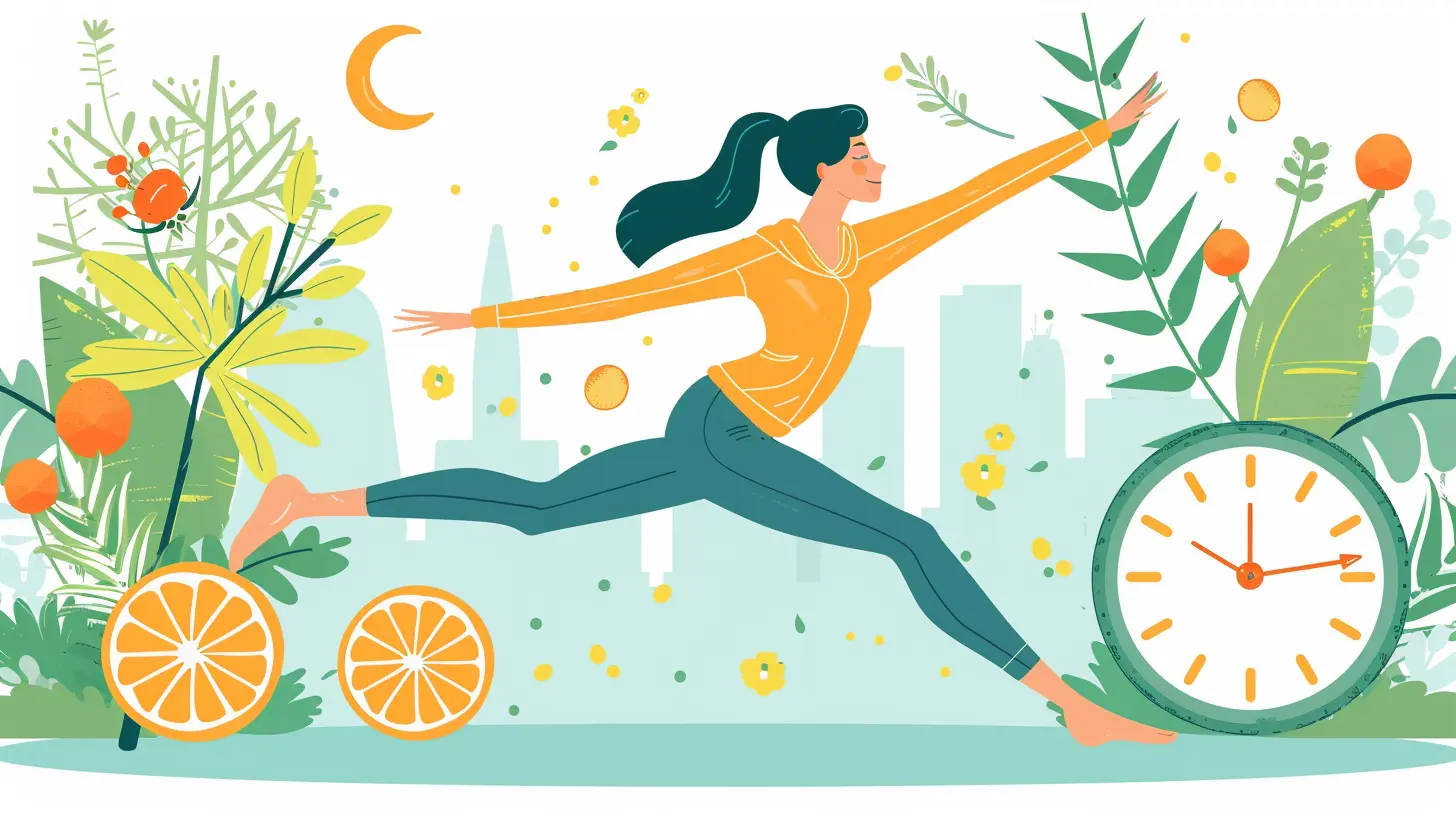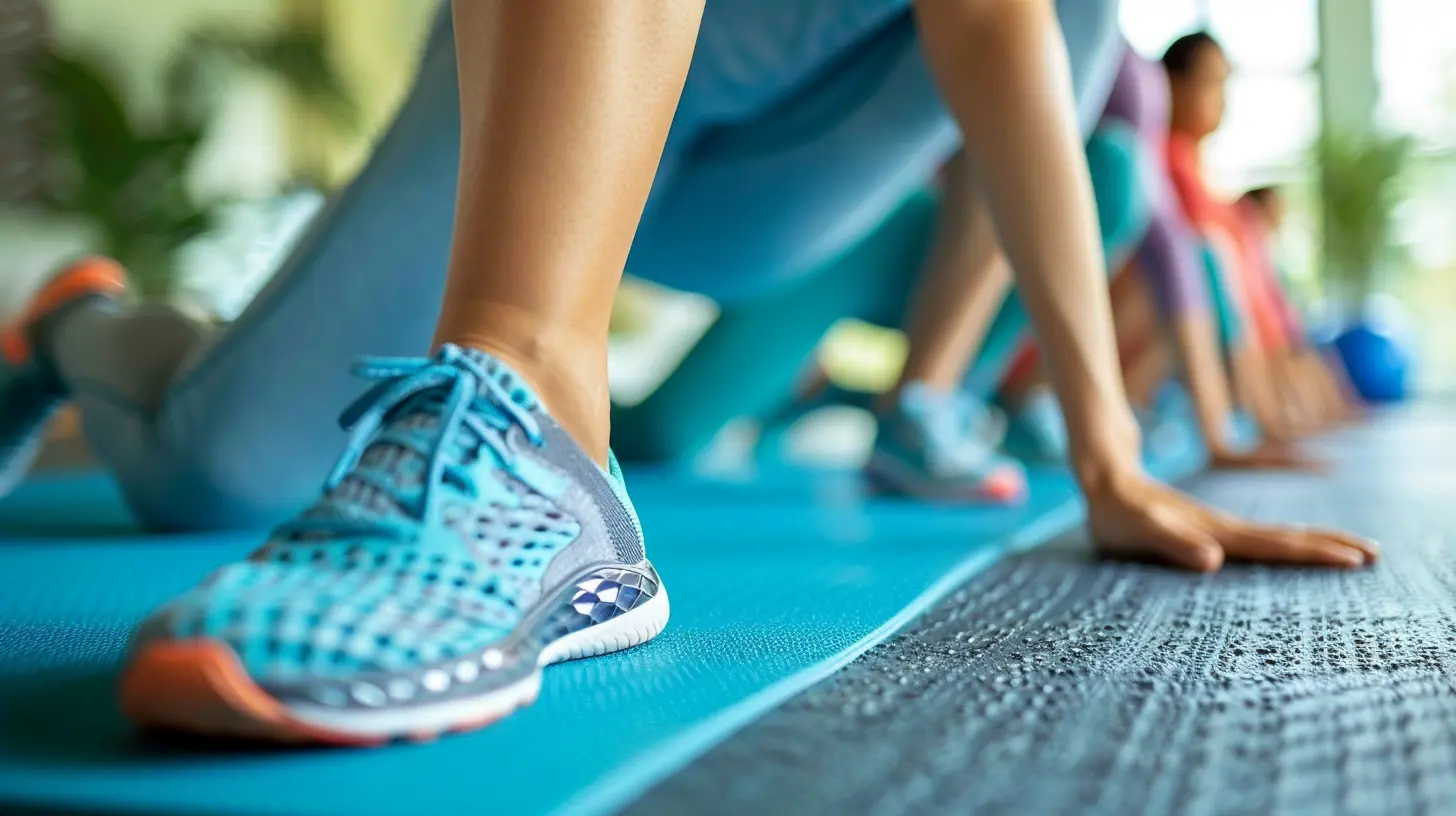24 March 2025
When was the last time you truly stretched? And no, I’m not talking about the half-hearted reach for your toes before hopping on the treadmill or the lazy stretch you do after rolling out of bed. I mean a proper, focused stretch where you felt your muscles say, “Ah, thank you!” Most of us brush off stretching because it feels like the bonus level of fitness—completely optional. But what if I told you that stretching is more like the cheat code to a healthier, stronger, and more flexible you? Let’s dive into why the art of stretching deserves a starring role in your daily routine. 
What is Stretching, Anyway?
Stretching is one of those things that we all kind of understand but don’t really give enough attention to. At its core, stretching is the act of deliberately lengthening your muscles and soft tissues to improve flexibility, mobility, and overall function. It's like giving your body a tune-up, so everything runs a little smoother.Whether you're sitting at a desk all day, chasing after kids, or hitting the gym regularly, your muscles endure tension and stress. Stretching works like a reset button, helping your body recover, stay functional, and prevent injury. 
Why Should Stretching Be Part of Your Daily Routine?
Here’s the deal: stretching isn’t just for athletes or gymgoers. It’s for everyone. Yep, that includes you too. It keeps your body in tip-top shape and can even enhance your mental well-being. Let’s break it down, point by point.1. Boosts Flexibility and Mobility
Think about how stiff your body feels after sitting in the same position for hours. Your muscles shorten and tighten over time, which limits your range of motion. Stretching counteracts this by lengthening your muscles and improving flexibility. Being more flexible isn’t just about touching your toes (although that’s a great perk!); it’s about moving more freely in your day-to-day life.Ever struggled to squat down to tie your shoelaces or felt awkward lifting groceries into your car? Regular stretching helps you move with ease and reduces those “ugh, I feel old” moments.
2. Prevents Injuries
Let’s face it—injuries are a pain, both figuratively and literally. Whether it’s a sprained ankle or a pulled back muscle, nobody’s got time for that. Stretching acts like a shield, prepping your muscles and joints for whatever movement comes their way.By improving your muscle elasticity and joint range of motion, you’re less likely to overextend or strain yourself. It's like stretching is your body’s personal insurance policy. And who doesn’t want that?
3. Enhances Posture
We’ve all seen those hunched shoulders and forward-leaning heads (maybe in the mirror?). Poor posture isn’t just bad for your appearance; it can cause long-term pain and discomfort. Stretching, especially for the chest, neck, and back muscles, can help correct imbalances caused by bad posture habits.It’s like giving your body a gentle nudge to stand tall and proud. Over time, regular stretching can help you feel more aligned and even reduce back pain. Bonus: you’ll look more confident, too!
4. Improves Circulation
Did you know that stretching can act as a mini boost for your circulatory system? When you stretch, you increase blood flow to your muscles, which delivers oxygen and nutrients and helps remove waste products like lactic acid. Better circulation means faster recovery, less fatigue, and more energy to power through your day.Imagine stretching as your body’s version of unclogging a traffic jam, letting everything flow smoothly. Sounds pretty great, right?
5. Reduces Stress and Promotes Relaxation
Life can be hectic. Between work deadlines, family responsibilities, and everything in between, stress is often unavoidable. But here’s where stretching comes to the rescue.Stretching helps lower cortisol (the stress hormone) levels, which works wonders for calming the mind. Plus, when you stretch, you’re often focused on your breathing, creating a mini meditation session that leaves you feeling balanced and peaceful. It’s basically a free therapy session for your body and mind.
6. Alleviates Aches and Pains
If you’re battling everyday aches and pains—like tight shoulders from hunching over a laptop or a sore lower back from sitting too long—stretching is your go-to remedy.By targeting specific problem areas, you can ease tension and discomfort. Think of it like giving your muscles a mini massage! And, let’s be honest, who doesn’t enjoy a little TLC for those tired spots? 
How to Start Stretching (Without Overthinking It)
Okay, so you’re convinced: stretching is awesome. But where do you begin? Good news—you don’t need a fancy yoga mat or a dedicated hour to get started. Just a few minutes a day can make a difference.Here’s a simple plan:
1. Set Aside 5-10 Minutes
Start small. Carve out time in the morning or before bed. You can even sneak in a quick stretch during lunch breaks.2. Focus on Major Muscle Groups
Don’t just stretch one or two areas; show love to your neck, shoulders, arms, back, hips, and legs. Covering all the bases ensures balanced flexibility.3. Hold Each Stretch for 15-30 Seconds
Stretching isn’t a race. Hold the pose long enough to feel the tension melt away, but never so much that it becomes painful.4. Listen to Your Body
If something doesn’t feel right, don’t push it. Stretching should feel good, not forced. Your body knows its limits—trust it.
Dynamic vs. Static Stretching: What’s the Difference?
Now, let’s clear up some confusion. There are different types of stretching, but the two big ones are dynamic stretching and static stretching.- Dynamic Stretching: Move through a range of motion—perfect as a warm-up. Think arm circles or leg swings to get the blood flowing.
- Static Stretching: Hold a stretch in one position—ideal for cooling down after exercise or winding down before bed.
Each has its place in your routine, so try to incorporate both depending on what your day looks like.
Common Mistakes to Avoid
Before you become a stretching aficionado, let’s talk about pitfalls to dodge.1. Skipping Warm-Ups: Stretching cold muscles can do more harm than good. Always warm up with light movement beforehand.
2. Bouncing While Stretching: Jerking movements can strain your muscles. Stick to slow, controlled stretches.
3. Forgetting to Breathe: It sounds silly, but it’s easy to hold your breath during a stretch. Deep, steady breaths help you relax and stretch deeper.
4. Overstretching: No pain, no gain? Nope, not when it comes to stretching. Push gently into discomfort, but never into pain.
Making Stretching a Habit
Here’s the trick with stretching: you’ve got to make it a habit. Think of it like brushing your teeth—it’s a small investment in your health that pays off big time.● Set a Reminder: Use alarms, sticky notes, or fitness apps to prompt you to stretch.
● Find a Stretching Buddy: Accountability makes everything easier (and more fun)!
● Tie It to Existing Habits: Stretch while watching TV, after a workout, or before bed. Pair it with something you already do daily.
Over time, stretching will feel like second nature rather than something you have to do.
The Bottom Line
Stretching isn’t just for gymnasts, yogis, or athletes. It’s for anyone who wants to feel better, move easier, and live a healthier life. Whether you’re looking to improve flexibility, fend off injuries, or simply destress after a long day, stretching has got your back (and your hamstrings, and your shoulders).The art of stretching is simple, accessible, and incredibly effective. So why not make it part of your day? Your body and mind will thank you.





Thorne Klein
Incorporating stretching into your daily routine enhances flexibility, reduces muscle tension, and improves overall well-being. Just a few minutes a day can make a significant difference in your health!
April 1, 2025 at 3:06 AM